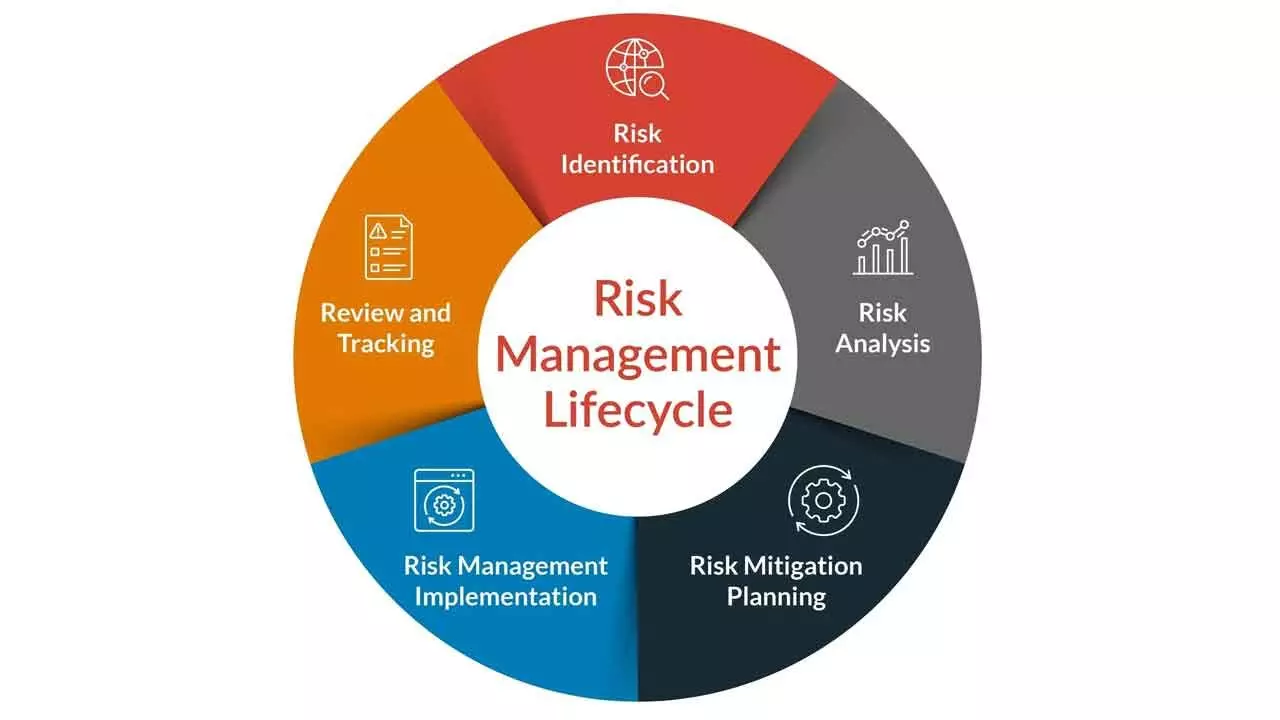Robustness Of Risk Management And Capital Buffer Are Integral To A Viable Business Strategy
Of late, regulators have been looking at the business plans and strategies of REs
Robustness Of Risk Management And Capital Buffer Are Integral To A Viable Business Strategy

There is an urgent need to be aware, assess, monitor and take effective mitigation measures to ensure that the government, organisation and financial institutions are strong enough to absorb unseen risks stemming from climate change
Risk management plays an important role in any organisation, particularly in banks, NBFCs and other financial institutions. In the present days of constant change it is necessary to manage the change with strong and robust risk management and strategic management. It cannot be expected that the situation remains unaltered as it is dynamic in nature and the day to day situations are changing either for positive or negative outcome. Hence risk management on enterprise level needs to be planned, measured, quantified, monitored and risk mitigation should be in place to avoid or at least minimise the risk.
The enterprise level risk management framework should be put in place to quantitatively and qualitatively manage the risk from short term, medium term and long term perspectives.
Risk is a part of any enterprise and cannot be totally avoided. There is direct correlation between the risk taken and the positive outcome or profit generated. After all, profit is the return generated from the risk that sis taken. This tradeoff between risk and return is to be managed well. Any unreasonable risk taken only in pursuance of higher return may land the organisation in trouble when the expected return may not materialise due to unexpected setbacks, Contingent plans have to be in place. Pursuance of high return without adequate capital buffer in place and without the ability to withstand such unexpected risks is ill-advised.
It is therefore imperative that an organisation or enterprise should be seized of unexpected risks and they should be able to predict the future with certain amount of certainty as their strategies and business plans account for such scenarios.
Here the importance of scenario analysis and stress testing becomes critical. A regulator analysis the totality of risks being faced by the regulated entities on the current situation along with calculating stress testing across scenarios and on various statistical methods to understand whether the financial institutions are able to absorb the aggregated risks on base and, middle and extreme scenarios. It is therefore necessary that all the regulated entities are also to make such portfolio analysis from different scenarios and stress testing to arrive at the relative financial strength and the required capital buffer at their end so that the current strategies and business plans as decided by their respective boards are properly evaluated from the risk angle also.
It is in this regard, that of late, regulators have been looking at the business plans and strategies of the REs and the relative strength of the board in evaluating the impending risks in respective business plans and the robustness of the risk management frameworks prevailing in those institutions and quality and expertise of the personnel in proper management of all likely scenarios.
The economic situation today in spite of fundamental strength, may suddenly get into a slow growth mode or the financial strength, which is now considered as adequate and strong, may suddenly get into unpleasant situation due to unanticipated developments, like the Covid-19 bombshell, which had far reaching consequences on economy, health, and financial strength of the government, which resulted in unreasonable debts.
The pandemic altered global economic fundamentals and financial strength. But for the Indian government and the active proactive steps and policies taken by the regulator, India could face this situation much better and recover and revive the economy and the fortunes of financial institutions on a stronger note.
These events are likely to happen quite often in this changing global warming and climate change. Climate change will be the biggest risk both to the economy and also for financial institutions. There is an urgent need to be aware, assess, monitor and take effective mitigation measures to ensure that the government, organisation and financial institutions are strong enough to absorb unseen risks stemming from climate change.
Regulated entities will have to properly factor in from credit, market, operational risk perspective and climate related risks and future credit and investment should be only assessing the mitigation measures to avoid further green gas emissions and control carbon dioxide emissions.
The RBI has been voicing concern on unreasonable growth in personal unsecured loans, In the recent policy statement, RBI has sent a message to such outliers in NBFC sector, who, due to higher capital and due to pressure of the equity investors, pursue a high growth strategy, particularly in such vulnerable sectors for the purpose of giving higher return to equity investors on a faster and short term period.
The geo political situation, conflict and war happening in some parts of the world, the possibility of oil price and commodities prices suddenly going high, supply chains disturbance, the recurring nature of either warming or excess rainfall and other climate changes are some of the important factors which have to kept in mind while deciding the respective institutions business strategy along with the robustness of risk management and capital buffer and see if there is any systematic risk.
It is therefore essential that all regulated entities give adequate attention to a regulator's direction and pre-warning messages and take corrective steps in their own best interest.
(The author is former Chairman & Managing Director of Indian Overseas Bank)

